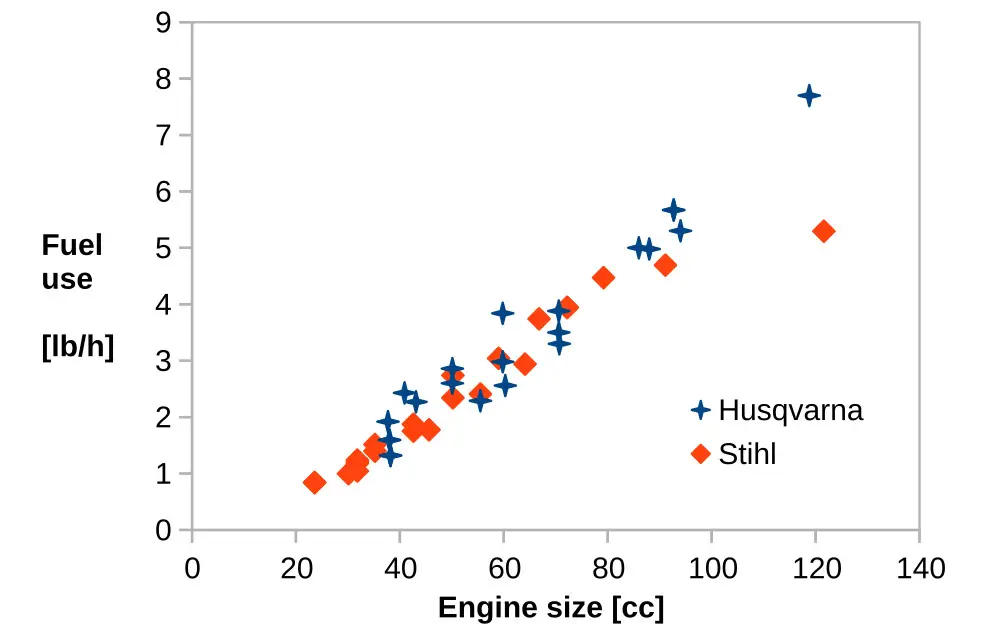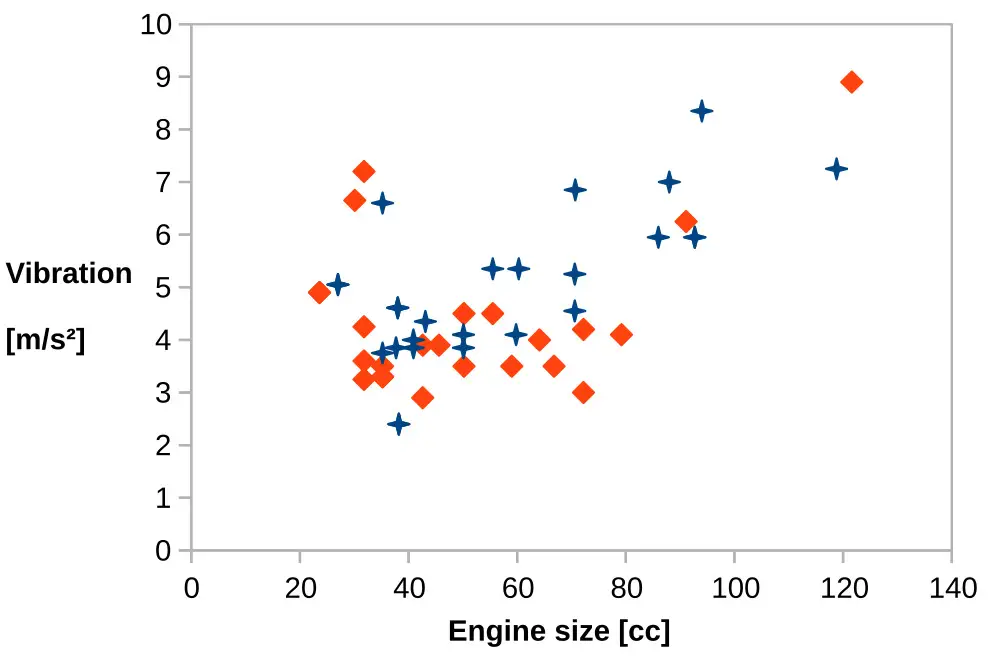In an earlier post, I compared Stihl and Husqvarna chainsaws in terms of performance specs: power, power-to-weight, and price-to-power. The conclusion: no meaningful difference.
But performance and price are not everything. In this article we will look at how Husqvarna and Stihl chainsaws differ for the user in general: performance&price, fuel economy, vibrations, bar selection and online availability.
I hope this article convinces you that on paper, the two brands are actually equally good.
| Husqvarna | Stihl |
|---|---|
| + slightly cheaper per cc and hp on average (-2…-6%) + better online availability | + slightly more power per cc and lb on average (+5%) + more original bars |
| – higher vibrations? | – bars harder to find |
Performance & Price: No Difference
In 2021, Husqvarna and Stihl chainsaws give you, on average, the same performance for the same price – see my spec comparison for proof. As shown in the table below, there is actually no meaningful difference between the brands in power/cc, power/weight, price/cc or price/power ratios.
| HUSQ. VS STIHL PERFORMANCE 2021 lineups | Husqvarna | Stihl |
|---|---|---|
| Power/cc: | 0.065 hp/cc | 0.069 hp/cc |
| Power/weight: | 0.300 hp/lb | 0.315 hp/lb |
| Price/cc: | 11.5 $/cc | 12.3 $/cc |
| Price/power: | 176 $/hp | 180 $/hp |
There are all sorts of talk of Stihl being more powerful, Husqvarna more expensive, one being heavier than the other, and so on. However, my study of the real data in the previous article showed that the average performance&price differences were all under 10%.
Cost per horsepower was particularly even: Husky and Stihl prices relative to power output are within 2% of each other – you can’t get closer than this.
The real performance differences are not between brands, but between saw models.
Fuel economy: Tie

The graph above shows the EPA-rated fuel consumption of Husqvarna and Stihl chainsaws, 2021 models against engine size (CC).
The graph shows that Husqvarna and Stihl saws use very similar amounts of fuel per hour of operation. On a close inspection, the Stihl average is a bit lower, but in many sizes Husqvarna has the lowest-consumption model.
For fuel consumption, it’s essentially a tie.
Vibration: Stihl wins?

The graph above plots the vibration levels (m/s²) of Stihl and Husqvarna 2021 chainsaw models. (The shown values are average of the two handles.)
We see that the vibration levels vary a lot between models. Stihl does have a somewhat lower average vibration levels, though. A win for Stihl, at least on paper. If real, these lower vibration numbers should translate into better user comfort with Stihl on average.
Two caveats: Husqvarna and Stihl report the vibration numbers according to different standards (ISO 5349-1 vs. DIR 2006/42/EC). I could not find out if these numbers are strictly comparable.
Second, the vibration levels obviously vary much more between models than between brands.
Bars & Chains: Each has its own
Husqvarna and Stihl use different guide bar standards that are mostly incompatible across brands.
This is a major concern if you already have bars and chains of either brand which you were planning to use with the new saw. Fitting Stihl bars on Huskies (or vice versa) is possible, but requires work on the bar or adapters – see my Stihl&Husqvarna bar compatibility guide for this.
Both brands have a decent selection of original and aftermarket bars and chains. Stihl’s original bar selection is a bit better in my opinion, particularly with long bars (up to 59″). But with the offerings of Cannon, Oregon, Sugihara and Tsumura (+numerous others) added, you can find any bar for either brand.
For more info on bars, check my Stihl and Husqvarna bar size guides; Stihl and Husqvarna original bar data pages; and Oregon bar selections for Husqvarna and Stihl.
Online shopping: Husqvarna wins
Where and how your chainsaw and accessories are available is a real practical concern. Here the two brands differ significantly: Husqvarna saws and parts are widely available online, but Stihl still prefers brick-and-mortar retailers.
Husqvarna saws and accessories are mostly available online at Lowe’s, Walmart, Amazon.com as well as Husqvarna’s own web store. (For Pro saws and big bars, though, you’ll have to visit a traditional retailer.)
Stihl saws, by contrast, are not really available online; instead, the main way to get a Stihl saw is still to visit a an actual retail store. While some Stihl parts can be found on Amazon.com, the online selection is much narrower than with Husky.
The Bottom Line
The conclusion of this comparison is that Husqvarna and Stihl chainsaws don’t differ a whole lot on average; as brands, both are equally good.
If you already own a bar collection for either Husky or Stihl, it makes sense to stick to the brand with a new saw. Otherwise, you’re better of using your time to select which saw model – these vary massively in all aspects.
It’s more about the model than the brand.